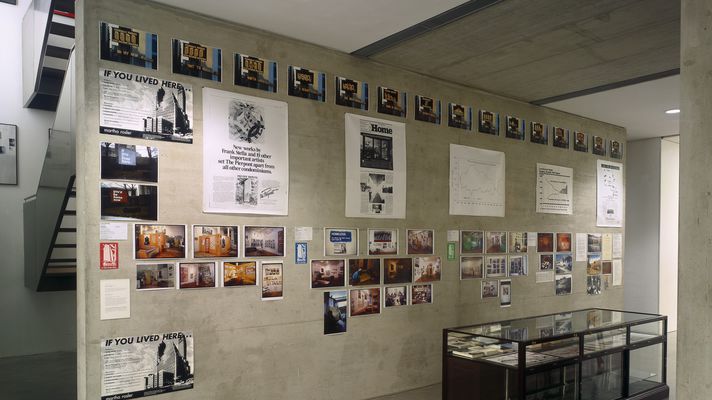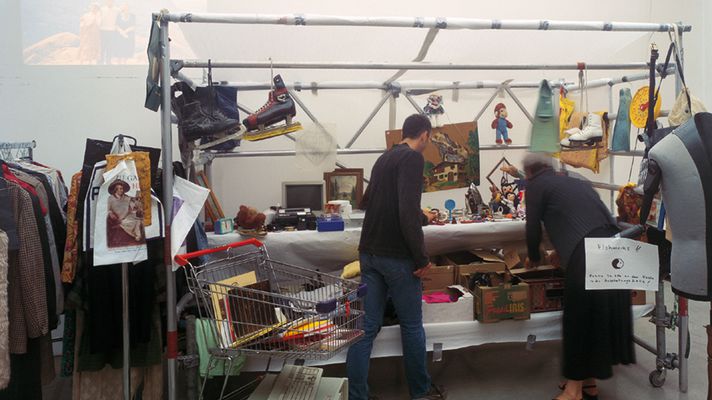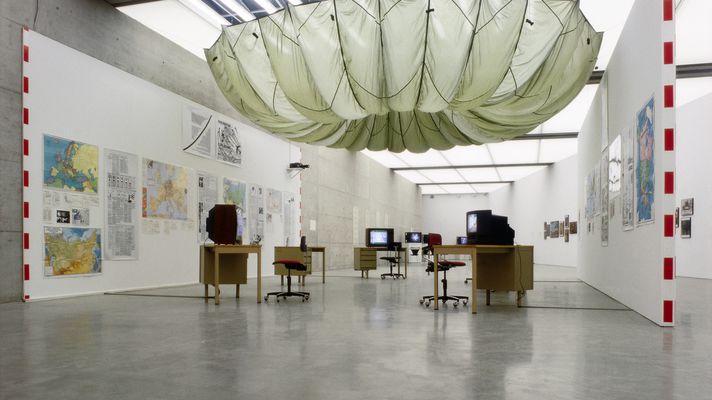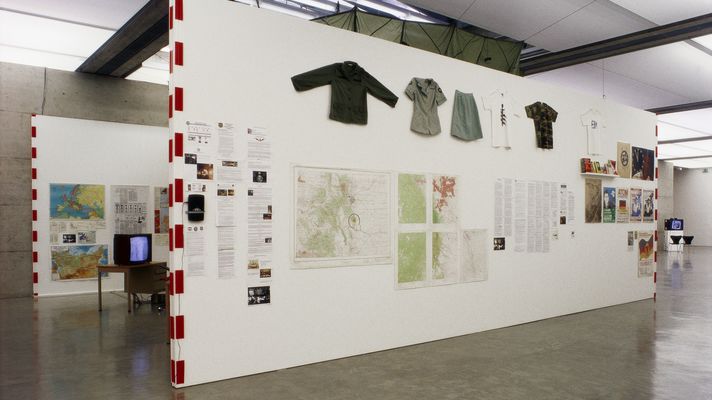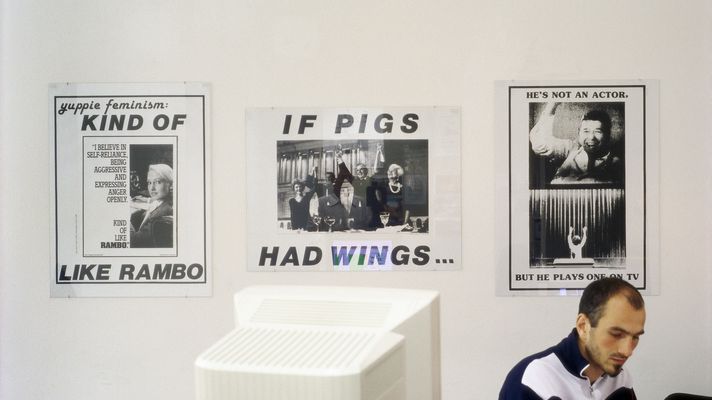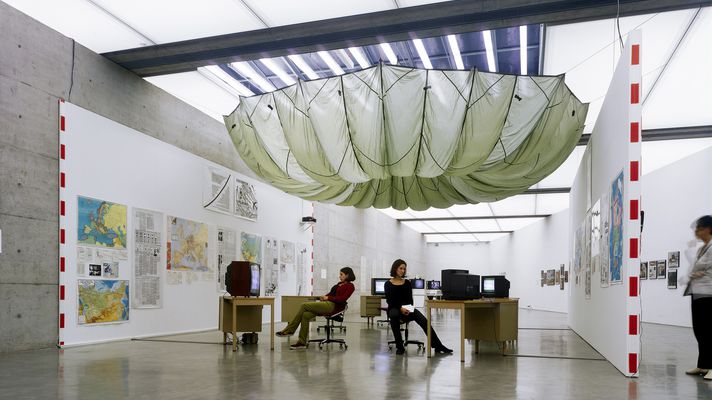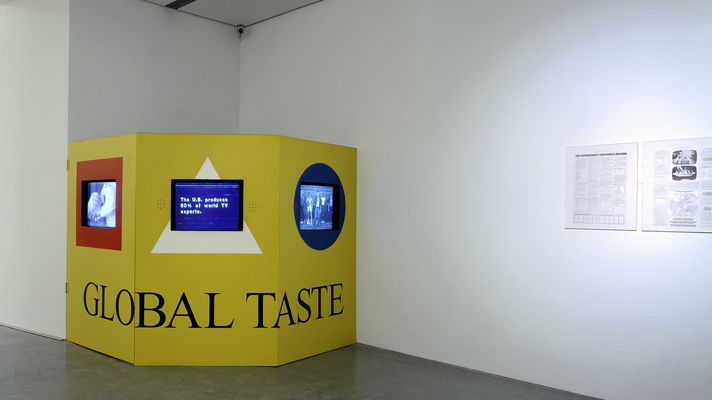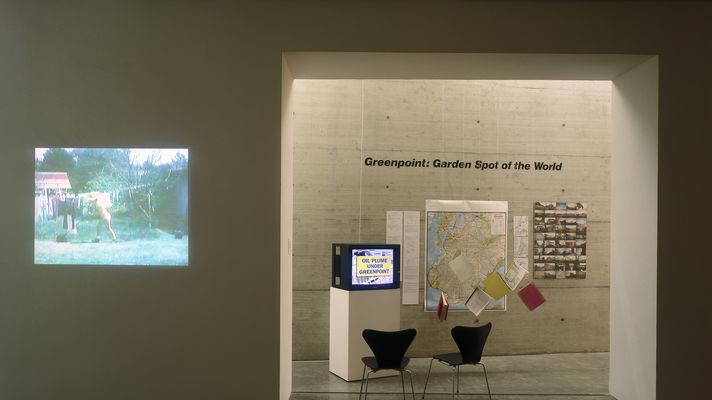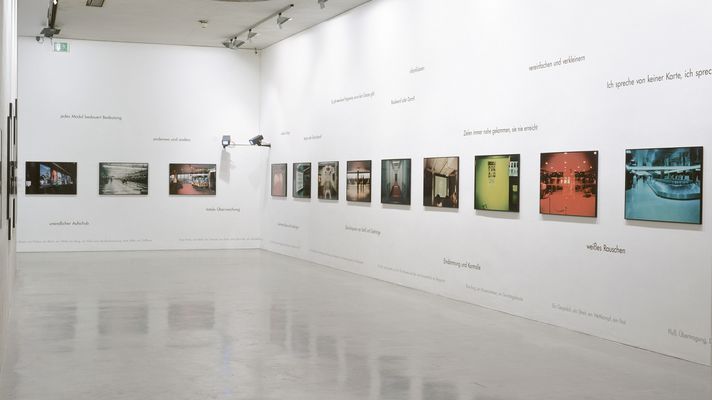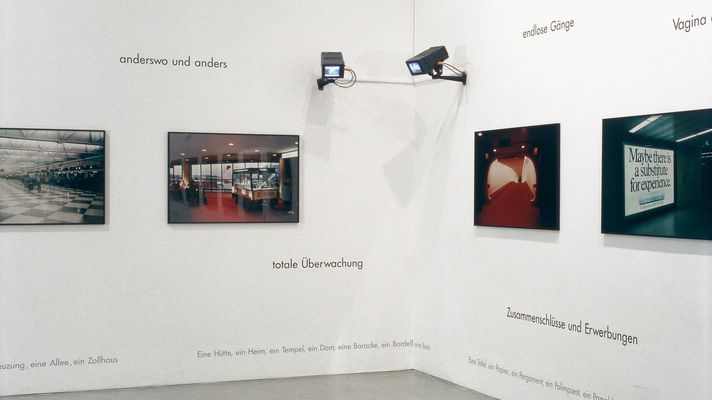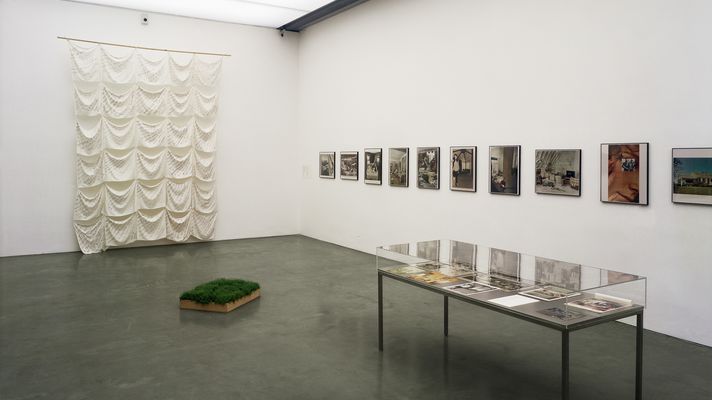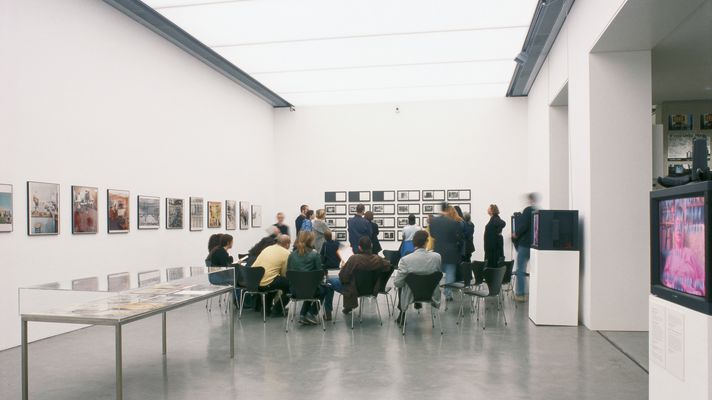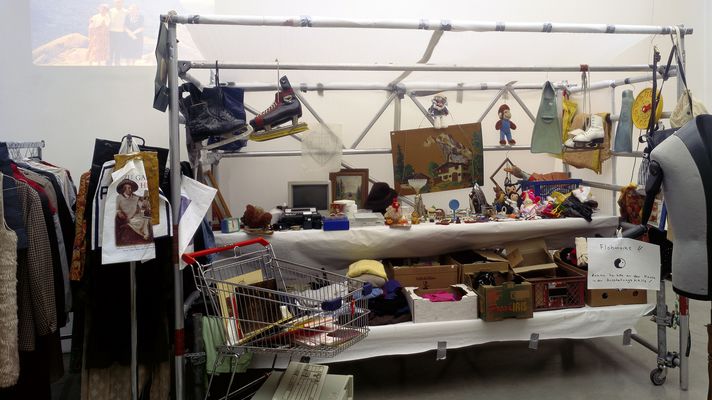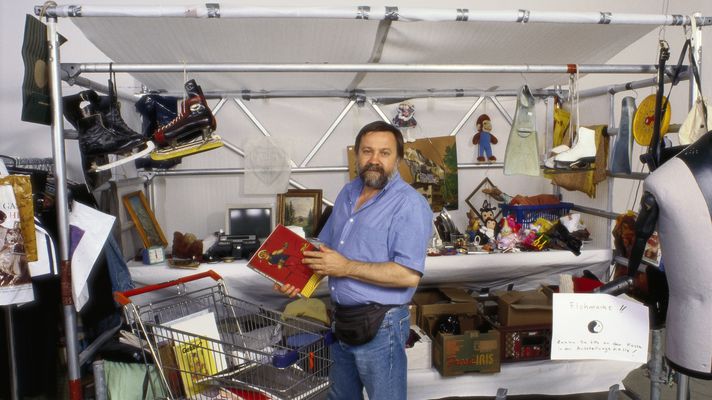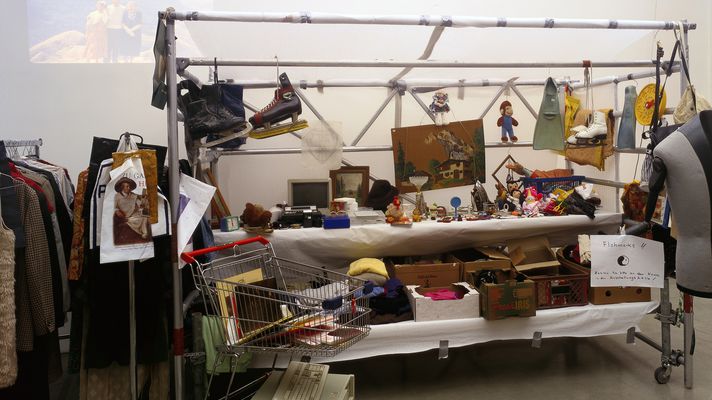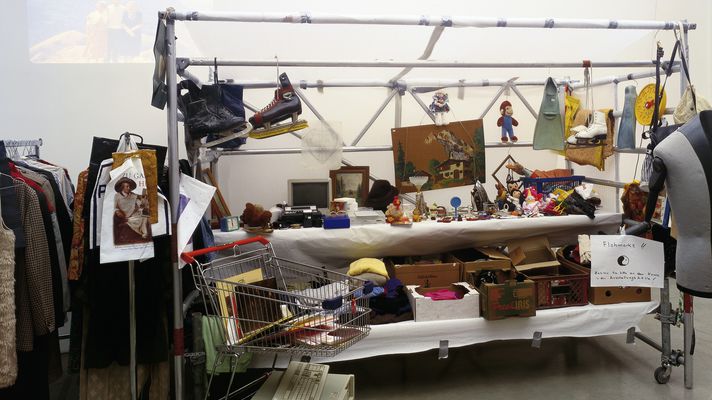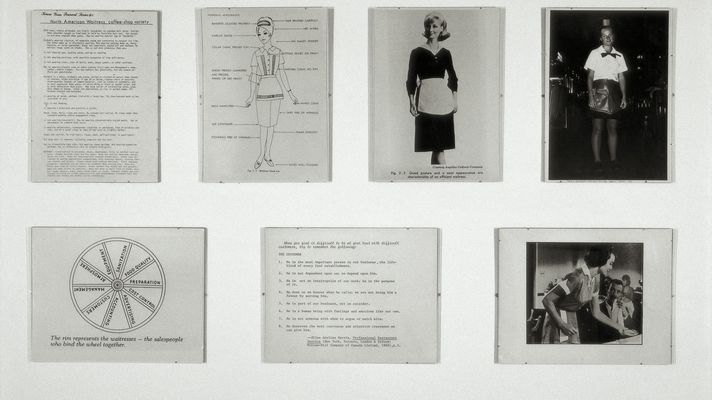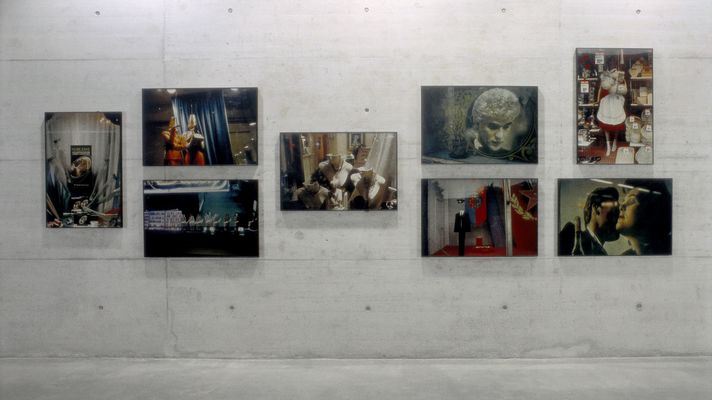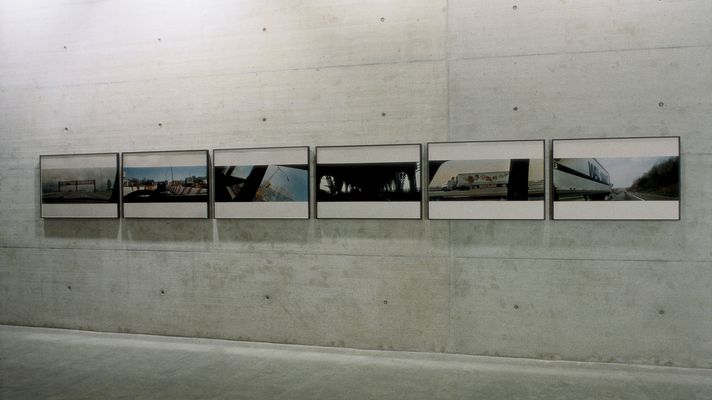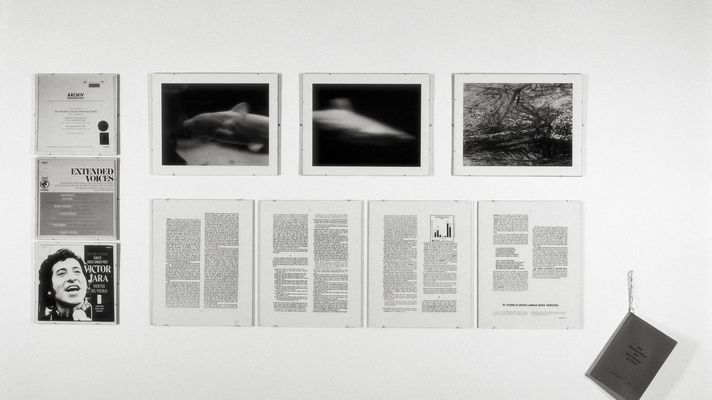Martha Rosler
Positions in a Life-World
Opening: May 11, 1999, 7 p.m.
12 May through 8 August 1999
Place of exhibition: Generali Foundation, Wiedner Hauptstraße, 1040 Vienna
The Generali Foundation presents a first survey of the multi-faceted œuvre of the American artist Martha Rosler. Since the nineties, her work has once again become greatly influential, especially among the younger generation.
Martha Rosler produced "Garage Sale" specifically for Vienna, based on a concept dating from 1973. The project was originally titled "Monumental Garage Sale" and was implemented in the Art Gallery of the University of California in San Diego.
Since the late sixties, Martha Rosler (Brooklyn, New York) has taken a position on socially relevant issues through works that are both poignantly critical and humorous, while continuing a vigorous engagement with questions of contemporary art. With a keen eye for quotidian reality, she deconstructs the "myths of everyday life" layer by layer. Rosler has created influential works in the fields of photography, performance, video, installation, and text as well as critical and theoretical essays. Not tied to any particular medium, she employs the methods and strategies which seem appropriate for each particular issue. Martha Rosler has a personal interest in moving beyond the circle of professional art connoisseurs to address a wider audience beyond the art world. For this reason, she uses a language in her works that many can relate to; she also does not avoid burlesque. Many of her works have a narrative, personal character which leaves open the question of whether they are autobiographical or fictional. For Martha Rosler, a work has prospects of resonance when it makes visible the relationship between direct experience and those things which mediate and cause it.
Rosler mainly directed her keen analysis and deadpan wit at the role of the mass media, and first and foremost its role in war. In the series of now legendary photomontages entitled "Bringing the War Home: House Beautiful" and "Bringing the War Home: In Vietnam" (1967-72), Rosler vented her frustration at the reporting done on the Vietnam War. She pasted war images from "Life" and other magazines onto pictures of interiors from "House Beautiful" or, conversely, U.S. scenes onto pictures of Vietnam. These photomontages were published by Rosler without any further comment in alternative magazines in California. With these manipulated scenarios, her intention was to evoke reflection on the actual experience of war abroad and on how this is consumed at home in front of the television or from the press.
In her work, Rosler has always commented critically on the position of women within society. In a further series of photomontages entitled "Beauty Knows No Pain, or Body Beautiful" (1965-74), she assailed the presentation of women in the media as a symbol of sexuality and the circulation of commodities, as well as the assignment of certain attributes, such as domesticity and emotion, to women. Influenced by the women's movement, Rosler began to work with performance. In "Monumental Garage Sale" (1973), a multi-media installation and performance in which she included her own physical involvement for the first time, the artist began to focus on the construction and representation of the (female) Self. This led to a series of further (video) performances such as "Vital Statistics of a Citizen, Simply Obtained" (1973), "Semiotics of the Kitchen" (1975) and "Martha Rosler Reads Vogue" (1982) to name only the most renowned.
The first serial postcard novels, where Rosler used text as the sole medium, were created in the mid seventies. These novels tell short, personal stories based on her experience, augmented by friends and other sources. Feminist themes largely serve as the subject matter of these anecdotes, while also characterizing specific social strata. She divided the stories up into individual chapters, and sent them to selected people at roughly one week intervals. Alongside the fine arts, Rosler also has an educational background in literature. Ever since she began to work with performance and video, nearly all of her works have been accompanied by a manuscript or accompanying text or are text-based works. For Martha Rosler, writing is an opportunity to make an immediate and direct contribution and is, from her point of view, a form which does not differ much from her visual work.
Food, which would eventually play a key role in the artist's work, crops up for the first time in the postcard novels. For Rosler, the confrontation with this theme presents the possibility to understand social and economic contexts. In a series of works, she explored the relationship between food and women (traditionally responsible for the production of food and nutrition in general). In the postcard novel and in the later video of the same title, "A budding gourmet" (1974), a woman tells about her wish for the high art of cooking and the production and consumption of gourmet food and exotic cooking to improve her life. In "Tijuana Maid" (1975), cooking is seen from the point of view of a Mexican mother of two children who must work illegally in the U.S. as a housemaid. In "Losing" (1977), Rosler deals with the case of a girl who dies of anorexia nervosa and how food can be exploited as a form of protest against an inhibiting environment and as an economic and political weapon.
A further important aspect in Rosler's work is a critical examination of the urban structures in which we live: i.e., cities, airports, streets, and automobiles as the locations of our everyday experience and their social implications. In the mid seventies, Rosler already questioned the role and representation of documentary photography in her photo-text installation "The Bowery in two inadequate descriptive systems" (1974-75) in which she avoids the direct presentation of people. This well-known work consists of photographs of empty commercial buildings in the Bowery - a street in Manhattan crowded with the homeless - juxtaposed with photographed texts, a "Poetry of Drunkenness." In the recent photo series "Transitions and Digressions" (1981-97), "Rights of Passage" (since 1993), and in the photo-text installation "In the Place of the Public" (1990), Rosler continued her exploration of these themes. Furthermore, topics such as homelessness, architecture, urban planning, etc., were raised during three group exhibitions, as well as in a number of different forums in connection with film and video performances, readings, etc., which formed part of the project "If You Lived Here...", which was curated by Martha Rosler in the Dia Art Foundation in 1989.
In connection with this project, the Generali Foundation has acquired for its collection the photo-text installation "The Bowery in two inadequate descriptive systems" (1974-75), one of the artist’s central works, as well as all of Rosler’s videotapes.
In addition to Austria, the exhibition will travel to England (Ikon Gallery, Birmingham), France (Institut d’art contemporain, Villeurbanne-Lyon), Spain (Museu d’Art Contemporani, Barcelona) and the U.S. (New Museum of Contemporary Art together with the International Center of Photography in New York). The exhibition has been co-organized with Ikon Gallery, Birmingham, and is supported by the Andy Warhol Foundation for the Visual Arts.
Curator: Sabine Breitwieser
Curatorial Assistance: Hemma Schmutz
